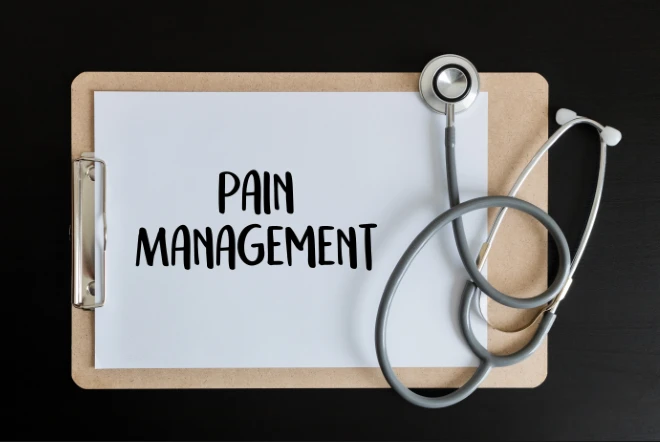Authored by Terrence Shenfield MS, RRT-ACCS, RPFT, NPS, AE-C
Chronic pain affects millions of people worldwide. While traditional medications and invasive treatments offer relief, many are now seeking holistic solutions and natural pain relief options to avoid potential side effects or dependency. Fortunately, plenty of effective remedies exist to naturally manage pain while promoting overall wellness.
This guide will walk you through some of the best pain management techniques and how you can incorporate them into your lifestyle for sustainable results. From dietary changes and physical therapies to mental relaxation strategies, these alternative pain care methods rely on time-tested wisdom and cutting-edge research.
Why Opt for Natural Pain Relief?
Natural pain management techniques often provide a multi-faceted approach to health. Unlike medications that may focus on short-term symptom relief, these methods aim to address root causes and prevent further discomfort. Here’s why more people are shifting to natural approaches:
- Safety: No harmful side effects associated with prolonged medication use.
- Long-term Benefits: Improves overall physical and mental wellness.
- Accessibility: Many methods involve ingredients or techniques you can use at home.
- Customizable: Tailored to individual needs, preferences, and specific pain conditions.
If you're exploring practical ways to manage pain, you're not alone. Check out more information on natural approaches to pain care here.
1. Anti-Inflammatory Superfoods for Pain Relief
Your diet can have a significant impact on your pain levels. Some foods possess anti-inflammatory properties, making them key components of alternative pain care strategies.
Foods That Fight Pain Naturally:
- Turmeric: Packed with curcumin, turmeric reduces inflammation in conditions like arthritis.
- Cherries: Known for their high antioxidant levels which help with joint pain.
- Omega-3 Fatty Acids: Found in salmon, walnuts, and flaxseeds, these compounds are excellent for calming chronic inflammation.
Want to explore more? Find additional details on dietary approaches to pain relief on ATECAM's health resources.
2. Strength Through Movement
Physical activity is often underutilized in pain management strategies. Exercise doesn’t just strengthen muscles and improve flexibility; it also helps release endorphins—your body’s natural painkillers.
Effective Movement Techniques:
- Yoga and Stretching: Encourages flexibility while targeting muscle tension and reducing stress.
- Tai Chi: Enhances balance and promotes relaxation, easing chronic pain.
- Low-Impact Exercises: Activities like swimming or walking reduce strain on joints.
Complement your daily routine with tailored exercises to support natural pain relief.
3. Mind-Body Techniques
Pain isn’t only physical; it’s deeply intertwined with mental and emotional states. Incorporating therapeutic practices targeting the mind-body connection can yield surprising results.
Key Mind-Body Practices:
- Meditation: Boosts mindfulness, leading to reduced pain perception.
- Deep Breathing Exercises: Activates the parasympathetic nervous system, promoting relaxation.
- Acupuncture: A centuries-old Chinese remedy, proven to alleviate musculoskeletal pain.
By managing stress and focusing on internal balance, these approaches offer holistic solutions to pain that work in tandem with other remedies.
4. Topical Remedies & Heat/Cold Therapies
Sometimes, simple topical remedies and temperature adjustments can relieve both acute and chronic aches.
Tried-and-True Approaches:
- Epsom Salt Baths: Relieves sore muscles while promoting relaxation.
- Heat Therapy: Improves blood flow to reduce stiffness. Perfect for back and neck pain.
- Cold Compresses: Helpful for swelling or injuries like sprains.
These cost-effective, easily accessible remedies serve as an excellent foundation for managing various types of pain effectively.
5. Herbal Solutions
Nature provides a treasure trove of herbs that serve as effective alternatives to over-the-counter painkillers.
Herbs to Try:
- Ginger: Works wonders for muscle strains and menstrual cramps.
- Willow Bark: Contains salicin, which is chemically similar to aspirin.
- Boswellia (Frankincense): Anti-inflammatory properties address arthritis-related discomforts.
For more expert insights into herbal pain remedies, check out ATECAM’s blog here.
6. Integrative Therapies
Integrating natural therapies with conventional treatments amplifies their effectiveness. Many healthcare providers are now endorsing practices like chiropractic adjustments or massage therapy as part of an alternative pain care program.
Benefits of Integrative Approaches:
- Offers personalized care tailored to physical and emotional needs.
- Treats the whole body rather than focusing solely on isolated symptoms.
- Delivers measurable improvements when combined with diet, exercise, and mental health strategies.
Make Natural Pain Relief Sustainable
Applying multiple strategies consistently ensures the best results when following pain management techniques. It’s not just about finding relief; it’s about creating a sustainable lifestyle.
ATECAM offers professional health resources aimed at equipping you with the tools and knowledge necessary to address pain holistically. Explore our services to learn how to take charge of your wellness.
Take the first step toward lasting relief. Visit ATECAM today.
References
- National Center for Complementary and Integrative Health. “Natural Products for Pain.” https://nccih.nih.gov/.
- Harvard Medical School. “Meditation’s Benefits on Pain Perception.” https://health.harvard.edu/.
- Mayo Clinic. “Anti-Inflammatory Diet for Pain.” https://mayoclinic.org/.
- Professional acupuncture standards report. https://nccaom.org/.
- Shenfield, T. (2023). "Exploring Integrative Pain Remedies." ATECAM.



